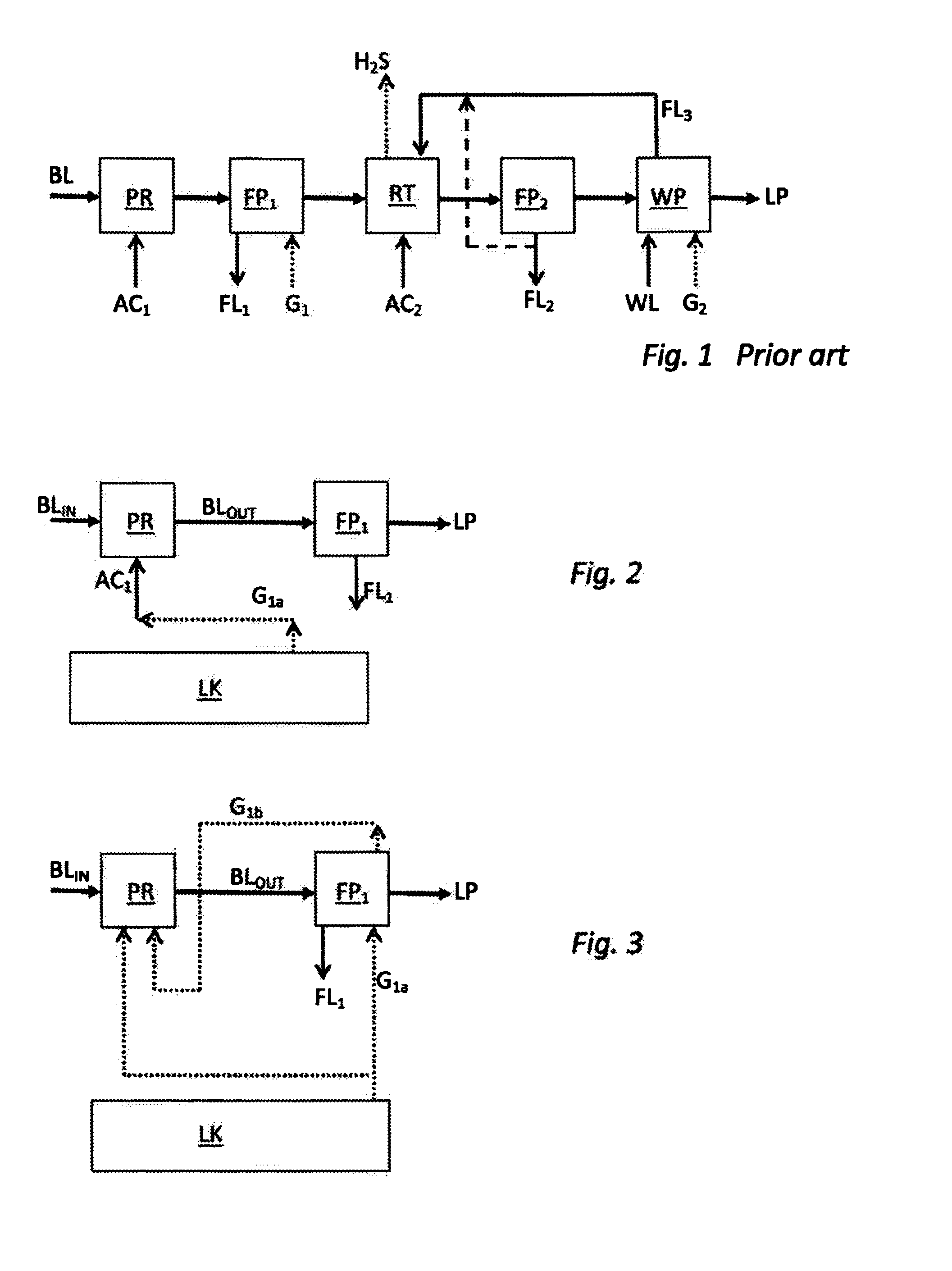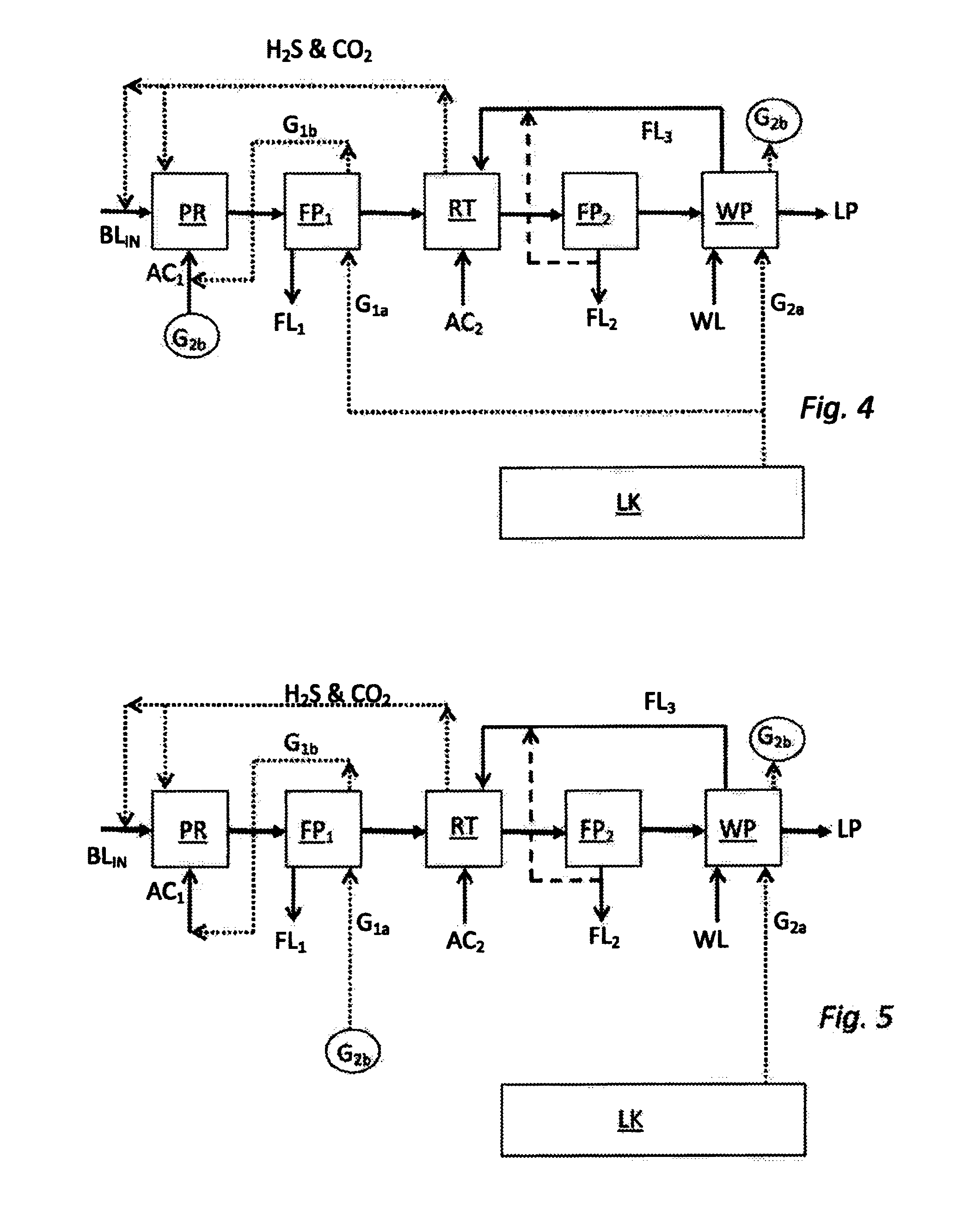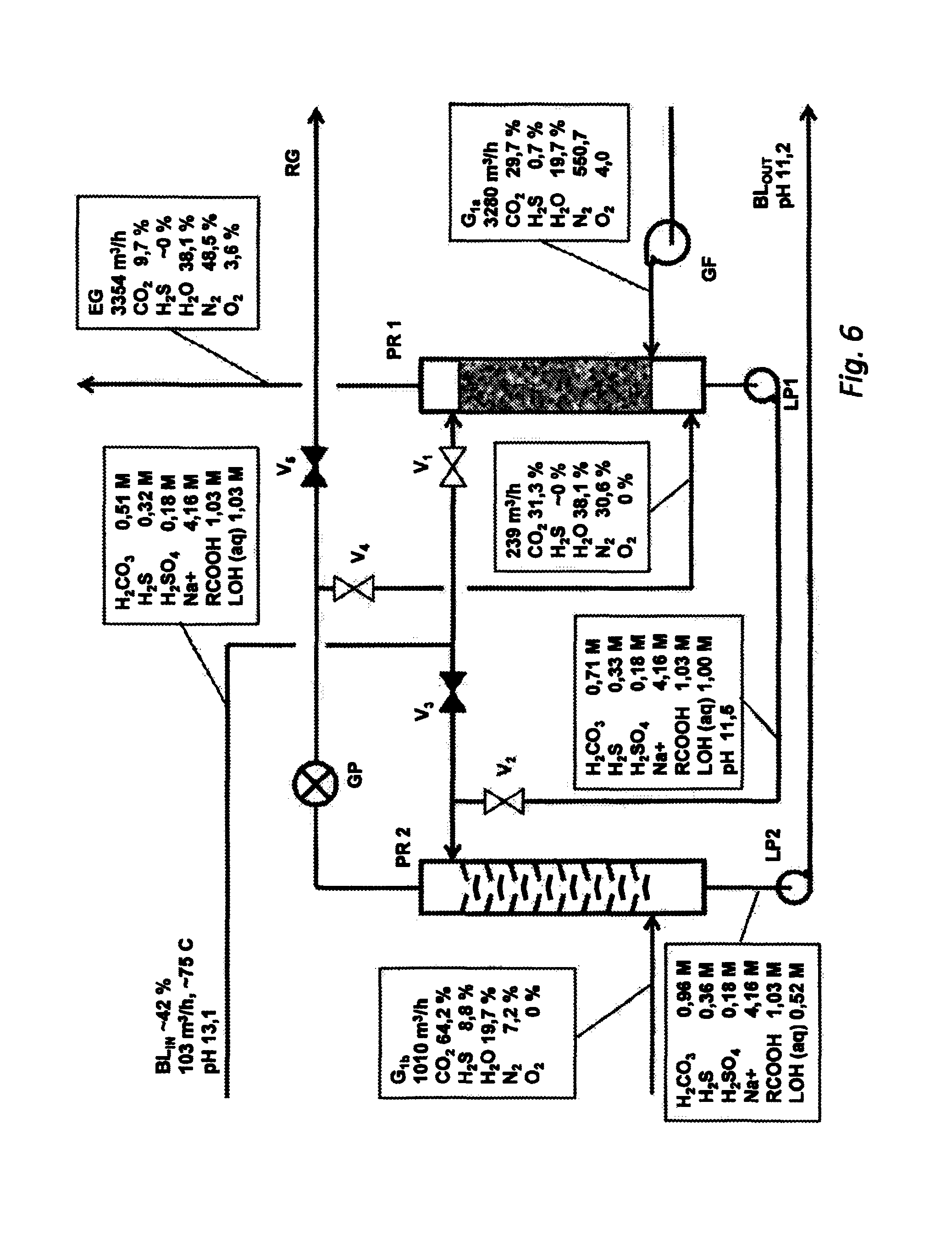Method for lignin separation from black liquor comprising multiple acidification steps
a technology of black liquor and lignin, which is applied in the field of lignin separation from black liquor, can solve the problems of reducing affecting the economic benefits of the process. , to achieve the effect of increasing the dissolving capacity of the acidifying gas, preventing the process from going on, and prolonging the retention time of the acidifier
- Summary
- Abstract
- Description
- Claims
- Application Information
AI Technical Summary
Benefits of technology
Problems solved by technology
Method used
Image
Examples
example
[0049]In FIG. 6 are shown typical process conditions for a two phase precipitation stage. The actual example is using original black liquor from a kraft pulping process for softwood having a pH level of 13.1 and a dry matter content of 42%, and the figures may differ when using other black liquors.
[0050]Here are shown 2 carbonizing towers or vessels, PR1 and PR2, connected in series. For the understanding of the flow through the towers are open valves V1, V2, V4 white and dosed valves V3, V5, black-filled. The chemical content of each flow is indicated in boxes either as total concentration in molecular concentration M or in percentage. The original black liquor BLIN is fed to the top of the first tower PR1 via open valve V1, and flows downwards to liquid pump LP1.
[0051]The carbonizing towers, PR1 and PR2 are preferably of differing design as to interior flow paths. The towers could be of simple elongated vertical design with a square section. The first carbonizing tower PR1 fed wit...
PUM
| Property | Measurement | Unit |
|---|---|---|
| Length | aaaaa | aaaaa |
| Fraction | aaaaa | aaaaa |
| Fraction | aaaaa | aaaaa |
Abstract
Description
Claims
Application Information
 Login to View More
Login to View More - R&D
- Intellectual Property
- Life Sciences
- Materials
- Tech Scout
- Unparalleled Data Quality
- Higher Quality Content
- 60% Fewer Hallucinations
Browse by: Latest US Patents, China's latest patents, Technical Efficacy Thesaurus, Application Domain, Technology Topic, Popular Technical Reports.
© 2025 PatSnap. All rights reserved.Legal|Privacy policy|Modern Slavery Act Transparency Statement|Sitemap|About US| Contact US: help@patsnap.com



